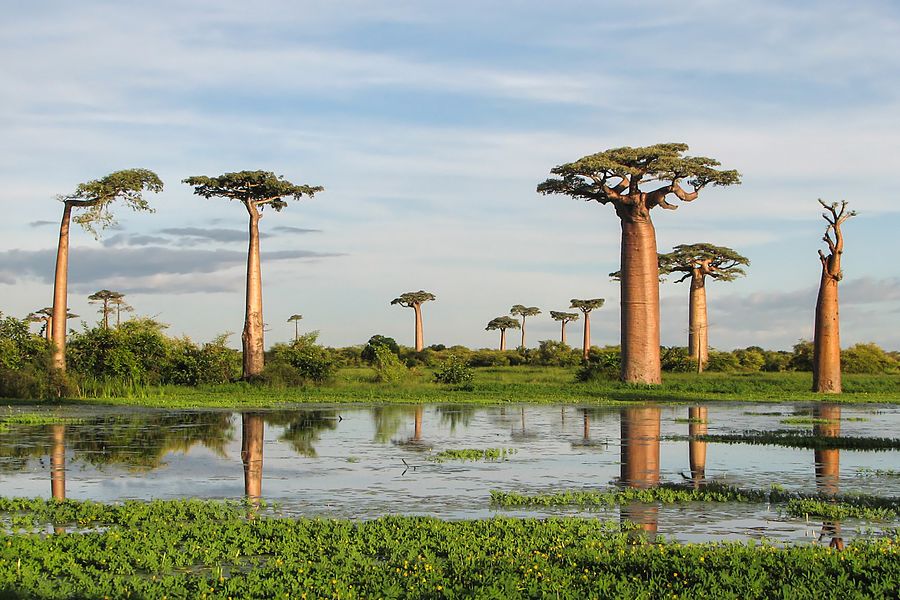Facts About Grandidier's baobab
Adansonia grandidieri, commonly known as Grandidier's baobab or the giant baobab, stands as the largest and most iconic of Madagascar's six baobab species. This remarkable tree is native to Madagascar and is unfortunately endangered, primarily due to agricultural expansion. One of the most renowned locations to witness these giants is the Avenue of the Baobabs.
Grandidier's baobabs are truly awe-inspiring, with colossal trunks that can reach heights of 25 to 30 meters. Their leaves are a distinctive bluish-green hue, densely covered with star-shaped hairs. They bloom during the dry season, attracting pollinators such as lemurs and Hawk Moths. The tree produces large fruits containing kidney-shaped seeds encased in an edible pulp.
Originally, Grandidier's baobabs thrived in the dry deciduous forests of southwestern Madagascar, particularly near rivers or lakes. Nowadays, they are predominantly found in open agricultural areas. The trees are in leaf from October to May and bloom from May to August, with fruits ripening in November and December. One of their survival strategies is storing water in their trunks to endure arid conditions. The species was first described by Henri Ernest Baillon in 1888 and named in honor of the French botanist Alfred Grandidier.
Locally, these baobabs are incredibly valuable. The seeds, the vitamin C-rich fruit pulp, and the oil-rich seeds are utilized for cooking oil. The bark is processed into ropes, and the spongy wood is used for thatching. Despite these uses, the primary threat to Grandidier's baobab is habitat loss due to deforestation for agriculture.
Conservation efforts are in progress, including the protection of the Avenue of the Baobabs and the expansion of protected areas in Madagascar. While Grandidier's baobab faces significant challenges due to habitat destruction, there is hope that ongoing conservation initiatives will help preserve this iconic species for future generations.
